After using smartphones manufactured by both Samsung and Xiaomi, there are a lot of differences between their devices.
Check out who comes on top in this Xiaomi vs Samsung article.
Samsung has been a leader in the electronics market for a long time and this has gradually improved, presenting a challenge to other rival brands. It has been Apple and Samsung dominating the smartphone market for years. However, all that changed when a Chinese brand came into the picture.
Xiaomi presents a real challenge to Samsung as both companies specialize in all types of electronic goods and not only smartphones. The only difference is that Xiaomi develops affordable smartphones that use the latest tech whereas Samsung sells their products at a slightly premium rate that’s not meant for everyone.
Let me take you through a few things that Xiaomi and Samsung have in common and a few things that are unique to each company to determine which is a better choice.
Xiaomi vs Samsung
Xiaomi vs Samsung has been a battle for as long as I can remember and this has led to Xiaomi slowly eating into Samsung's market.
With high-end phones that run on Android being sold for a fraction of what Samsung retails their smartphones for, Xiaomi has managed to prove to the world that sometimes the best can cost a lot less.
Marketing Plan

Both Xiaomi and Samsung follow marketing plans that are on either end of the spectrum. While Samsung advertises its products both online and offline, Xiaomi on the other hand focuses more on word of mouth and social media posts.
- Samsung follows a direct approach while marketing their smartphones, they portray their devices as not only status symbols but also smart devices that can add value to your everyday life. This is something Xiaomi does not do, but they have managed to gather followers for their products through a compelling base of social media influencers.
- While marketing for sales, one brilliant approach that Xiaomi follows is to initially sell their smartphones through online flash sales. This creates a demand for the smartphone leading to them ultimately selling more than they might have anticipated. This has worked via flash sales on eCommerce sites they’re currently tied up with. Samsung on the other hand willingly spends big bucks on visual and print advertising to have their products sold.
- Samsung phones are priced accordingly to cover what is spent on advertisements, this is the main reason their smartphones are a tad bit pricey. However, Xiaomi can price their smartphones at a lower rate for two simple reasons; they don’t spend much on advertising to incur a loss and their smartphones are manufactured locally so their raw materials and components are procured at a cheaper price.
Verdict: Xiaomi wins in terms of the marketing plan they follow and how they’ve managed to achieve so much with such little marketing.
After Sales Support

Xiaomi and Samsung have a quick-acting team of professionals who get the job done. From general customer queries to full-blown repairs, both companies rank among the top ten in terms of providing after-sales support.
- Xiaomi’s support team ranges from technicians at their service centers to a contact center you can reach over a phone call, chat, or email. They normally provide a resolution to tech-based queries within 24-48 hours and would have a smartphone serviced within 24 hours. Samsung follows the same approach to providing after-sales support but would have more service centers located in every city.
- In terms of warranty, Xiaomi smartphones come with a 2-year warranty on handset defects and this applies to labor and parts. Samsung limits their warranty to one year for their smartphones along with the in-built batteries while it is a maximum of six months for other accessories sold with the smartphone.
- Apart from Authorized service centers, Samsung also has trained professionals based in their Retail stores to assist with any issues you may be facing with your product. On the other hand, Xiaomi does not have physical retail stores to provide in-store service. This has created a slight issue for Xiaomi as customers have to solely rely on their Mi Service centers only.
Verdict: Xiaomi dominates in the After-Sales market as they deliver timely service along with a 2-year warranty on their smartphones.
Latest Xiaomi vs Samsung - Smartphones in the Market
Over the past few years, Xiaomi and Samsung have been competing to manufacture smartphones for everyone and in all price ranges. Samsung initially used to base their smartphones on Apple’s range of iPhones but then Xiaomi came in and did a better job at that.
Let’s go over the top pairs of Xiaomi and Samsung smartphones as we cover each budget group.
Xiaomi 13 vs Samsung S23

I was excited to compare and contrast both devices based on design, display, specs & software, camera, battery, and price. Here's my take on each aspect.
| Specification | Xiaomi 13 | Samsung Galaxy S23 |
|---|---|---|
| Display | 6.36-inch OLED, 1080 x 2400 pixels, 120Hz refresh rate | 6.1-inch Dynamic AMOLED 2X, 1080 x 2400 pixels, 120Hz refresh rate |
| Processor | Qualcomm Snapdragon 8 Gen 2, up to 3.2GHz | Qualcomm Snapdragon 8 Gen 2, up to 3.36GHz |
| RAM | 8GB / 12GB | 8GB |
| Storage | 256GB / 512GB | 256GB |
| Rear Camera | 50MP main with OIS, 10MP telephoto, 12MP ultrawide | 50MP main with OIS, 10MP telephoto, 12MP ultrawide |
| Front Camera | 32MP, 1080p video | 12MP, 4K video |
| Battery | 4500mAh, 67W wired charging, 50W wireless charging | 3900mAh, 25W wired charging, 15W wireless charging |
| Operating System | Android 13, MIUI 14 | Android 13, One UI 5.1 |
Design
Let's start with the Xiaomi 13. I was impressed with its 6.36-inch OLED display with a Full HD+ resolution of 1080 x 2400 pixels. It is slightly larger than the Samsung Galaxy S23's 6.1-inch Dynamic AMOLED 2X display with the same resolution.
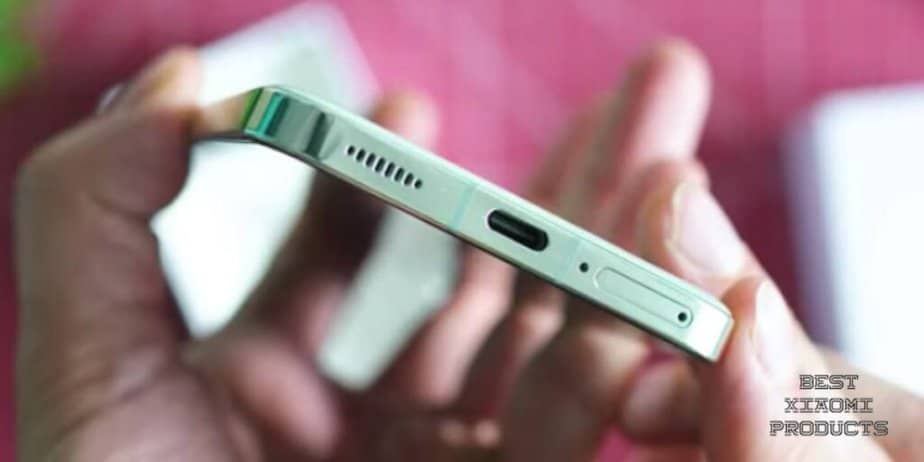
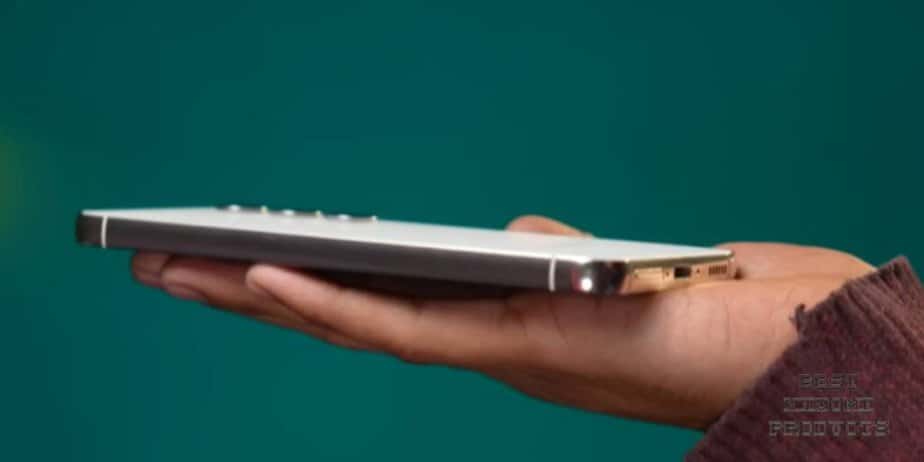
Both screens have a 120Hz refresh rate, HDR10+ certification, and an in-display fingerprint reader. However, I preferred the Xiaomi 13's design over the Samsung Galaxy S23's. It has a sleek and modern look that I find more appealing.
Display
In terms of display, both devices are very similar. Both phones have a 120Hz refresh rate, HDR10+ certification, and an in-display fingerprint reader.
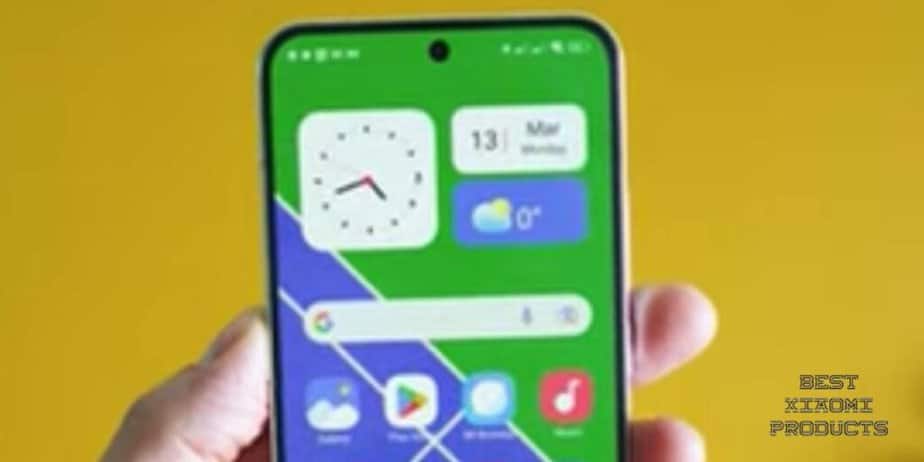
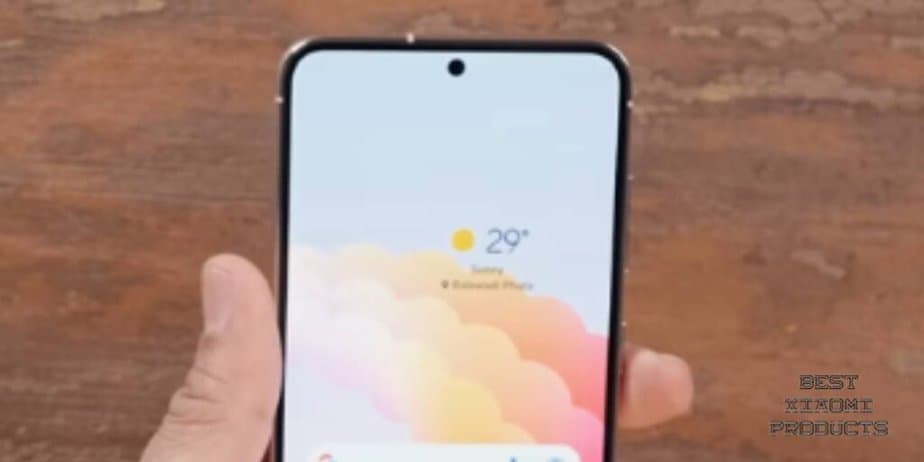
However, the Xiaomi 13 has a slightly larger and more vibrant OLED display, which I prefer over the Samsung Galaxy S23's Dynamic AMOLED 2X display.
Specs & Software
Both devices are powered by the same Qualcomm Snapdragon 8 Gen 2 chipset, which is the most powerful mobile processor available. However, the Samsung Galaxy S23 has a slightly higher clock speed of 3.36 GHz, which could result in slightly better performance, at least when it comes to the CPU.
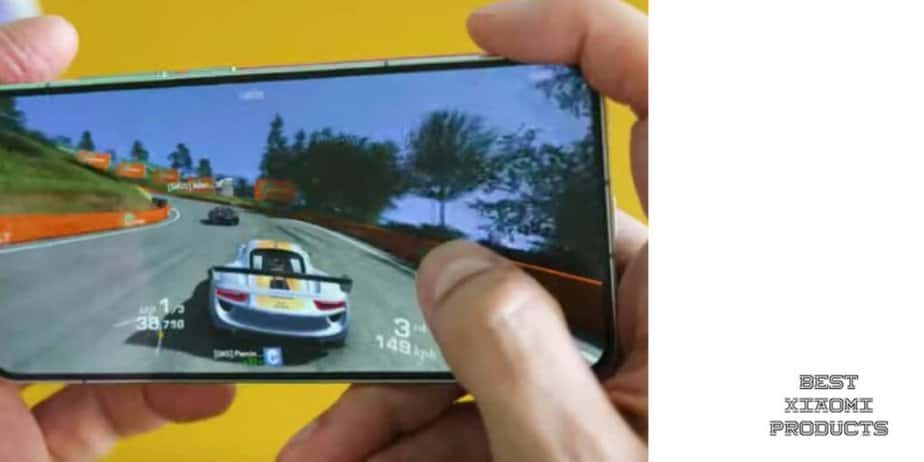
Both devices come with 8GB of RAM, but the Xiaomi 13 also offers higher storage options of up to 512GB, while the Samsung Galaxy S23 maxes out at 256 GB. The Xiaomi flagship also comes in a configuration with 12 GB of RAM, which is the reason why it wins the hardware comparison.
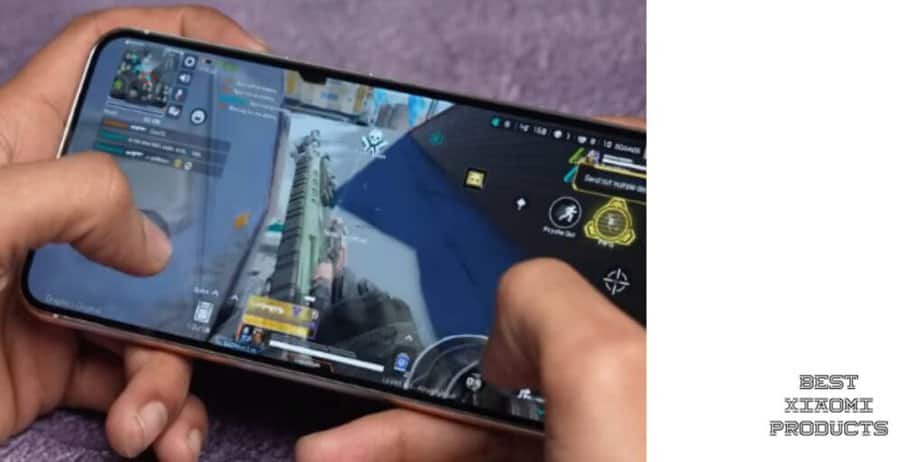
The Samsung Galaxy S23 and the Xiaomi 13 run Android 13 out of the box, with highly customized user interfaces on top: One UI 5.1 and MIUI 14, respectively.
Camera
In terms of camera, both devices have a triple-camera setup on the back, which includes a 50MP main camera with OIS, a 10MP telephoto lens with 3x optical zoom, and a 12MP ultrawide shooter. On the front, there is a 12MP selfie camera able to record videos with a 4K resolution.
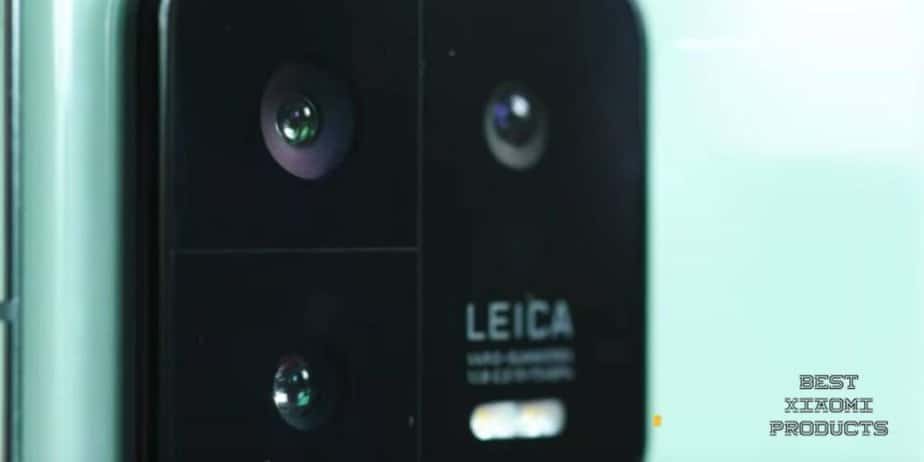
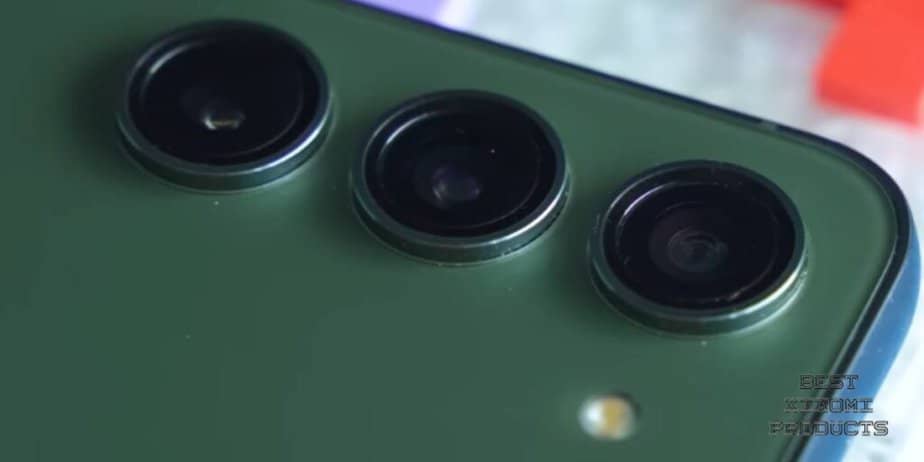
However, the Samsung Galaxy S23 has an advantage with its slightly better front-facing camera performance. The Xiaomi 13's 32MP front-facing camera can only record 1080p videos.
Battery
The Xiaomi 13 has a larger 4500mAh battery compared to the Samsung Galaxy S23's smaller 3900mAh battery.
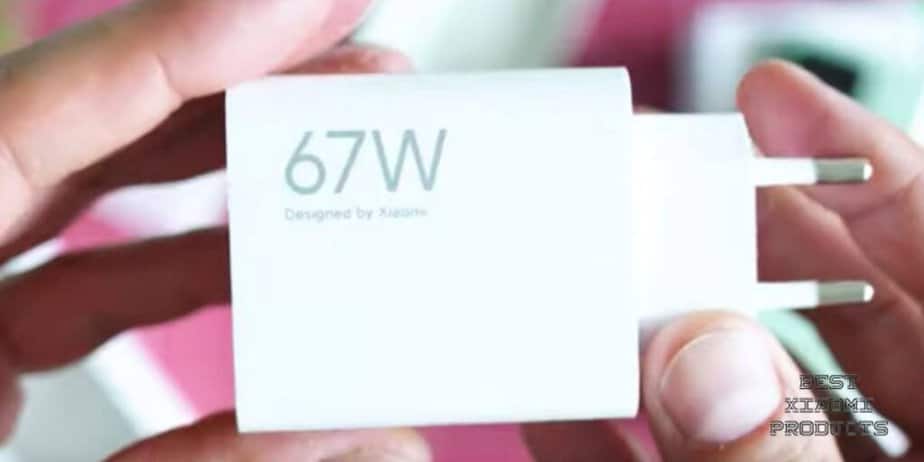
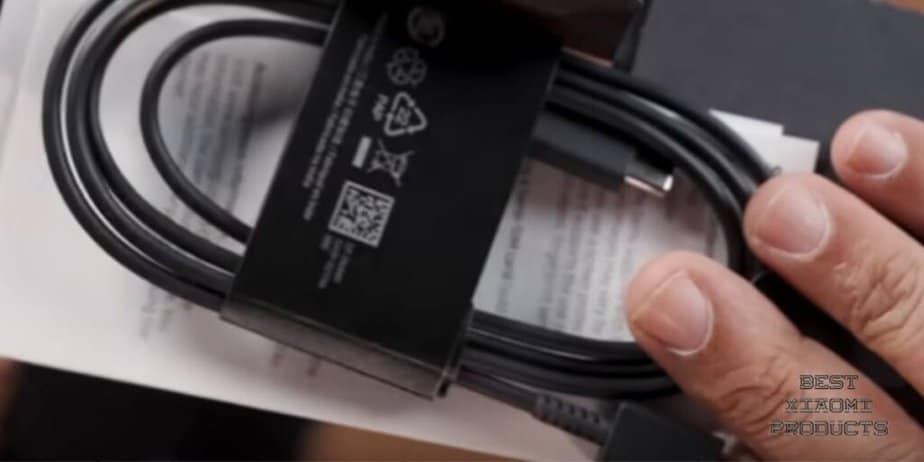
It also has faster 67W wired charging and 50W wireless charging, making it more convenient for users who need to charge their phones quickly. Plus, it provides a longer battery life compared to the Samsung Galaxy S23.
Price
Lastly, let's talk about price. The Samsung Galaxy S23 is a premium device with a starting price of around $899 globally, while the Xiaomi 13 hits the Chinese shelves with a starting price of around $586, and it is still not available globally. Based on the price alone, the Xiaomi 13 is a more affordable option.
Overview
Both the Samsung Galaxy S23 and Xiaomi 13 offer impressive features and specifications.
The Samsung Galaxy S23 has a more durable build, better water and dust resistance, and a more minimalist design. On the other hand, the Xiaomi 13 has a larger battery, faster charging speeds, and higher RAM and storage options.
Ultimately, the decision on which phone is better depends on the user's personal preferences and needs. Both devices are great choices for anyone looking for a high-performance smartphone.
Xiaomi 12 vs Samsung S22

Check out how the latest high-end smartphones from Xiaomi and Samsung stack up against each other. On the spec sheet, both seem similar, however, the Samsung S22 is better with cameras, software, and display. On the other hand, the Xiaomi 12 is better in performance, battery, and build quality. So choose wisely.
| Category | Xiaomi 12 | Samsung Galaxy S22 |
| Chipset | Qualcomm Snapdragon 8 Gen 1 | Qualcomm Snapdragon 8 Gen 1 |
| RAM | 8/12GB | 8GB |
| Storage | UFS 3.1 128/256GB | UFS 3.1 128/256GB |
| OS | Android 11, MIUI 12.5 | Android 11, One UI 3.1 |
| Display | 6.28” AMOLED 120Hz up to 1200 nits, HDR10+ 1080 x 2400 pixels (QHD) |
6.1” Dynamic AMOLED 120Hz up to 1300 nits, HDR10+ 1080 x 2400 pixels (FHD) |
| Main Camera | 108 MP wide, 13 MP ultrawide, 5MP macro | 12 MP wide, 64 MP telephoto, 12 MP ultrawide |
| Camera Features | 8K video up to 30fps 4K video up to 60ps 1080p video up to 240fps HDR10+ Gyro-EIS stabilization |
8K video up to 24fps 4K video up to 60fps 1080p video up to 240fps 720p video up to 960fps HDR10+ Stereo Sound Recording Gyro-EIS stabilization |
| Front Camera | 20 MP wide HDR 1080p video up to 60fps 720p video up to 120fps |
12 MP wide Auto-HDR, Dual Video Call 4K video up to 60fps 1080p video up to 30 fps |
| Dimensions | 164.3mm x 74.6mm x 8.1mm | 151.7mm x 71.2mm x 7.9mm |
| Weight | 196g | 171g |
| Build | Gorilla Glass Victus front and back Aluminum frame |
Gorilla Glass Victus front Plastic back Aluminum frame |
| Battery | 4,600 mAh | 3,700 mAh |
| Charging | 55W Fast Charging 50W Fast Wireless Charging 10W Reverse Wireless Charging |
25W Fast Charging 15W Fast Wireless Charging 4.5W Reverse Wireless Charging |
Xiaomi vs Samsung: Galaxy S21 vs Mi 11

When it comes to Android flagships, Samsung has been at the top of the food chain for years now - so much so that the only real competitor to Apple’s famous line of smartphones has been the Galaxy S series (in both quality and price). However, in recent years, there’s been a ‘new kid on the block’, with powerful, high-performance smartphone models at oh-so-attractive price tags: Xiaomi.
In this comparison review of the latest Android flagship smartphones, we’re putting the Android king Samsung Galaxy S21 against the Xiaomi Mi 11 - the affordable smartphone that could - to see which one comes out on top.
At A Glance
|
Category |
Xiaomi Mi 11 |
Samsung Galaxy S21 |
|---|---|---|
|
Price |
From $799 |
From $915 |
|
Chipset |
Qualcomm Snapdragon 888 5G |
Exynos 2100 |
|
CPU |
Octa-core |
Octa-core |
|
GPU |
Adreno 660 |
Mali-G78 MP14 |
|
RAM |
As Configured: 8GB Available with 6GB, 8GB, 12GB |
8GB |
|
Storage |
128GB, 256GB UFS 3.1 |
128GB, 256GB UFS 3.1 |
|
OS |
Android 11, MIUI 12.5 |
Android 11, One UI 3.1 |
|
Display |
AMOLED 120Hz up to 1500 nits, HDR10+ 6.81” (91.4% screen-to-body) 1440 x 3200 pixels (QHD) |
Dynamic AMOLED 2X 120Hz up to 1300 nits, HDR10+ 6.2” (87.2% screen-to-body) 1080 x 2400 pixels (FHD) |
|
Main Camera |
108 MP wide, 13 MP ultrawide, 5MP macro |
12 MP wide, 64 MP telephoto, 12 MP ultrawide |
| Camera Features |
8K video up to 30fps 4K video up to 60ps 1080p video up to 240fps HDR10+ Gyro-EIS stabilization |
8K video up to 24fps 4K video up to 60fps 1080p video up to 240fps 720p video up to 960fps HDR10+ Stereo Sound Recording Gyro-EIS stabilization |
|
Front Camera |
20 MP wide HDR 1080p video up to 60fps 720p video up to 120fps |
12 MP wide Auto-HDR, Dual Video Call 4K video up to 60fps 1080p video up to 30 fps |
|
Dimensions |
164.3mm x 74.6mm x 8.1mm |
151.7mm x 71.2mm x 7.9mm |
|
Weight |
196g |
171g |
|
Build |
Gorilla Glass Victus front and back Aluminum frame |
Gorilla Glass Victus front Plastic back Aluminum frame |
|
Battery |
4,600 mAh |
4,000 mAh |
|
Charging |
55W Fast Charging 50W Fast Wireless Charging 10W Reverse Wireless Charging |
25W Fast Charging 15W Fast Wireless Charging 4.5W Reverse Wireless Charging |
|
Benchmarks |
AnTuTu Score: 668722 |
AnTuTu Score: 584,055 |
Performance

Comparing the Samsung Galaxy S21 and the Xiaomi Mi 11 in terms of performance is pretty straightforward. If you get the Samsung Galaxy S21 with the Qualcomm Snapdragon 888 5G (models available in China and the U.S.) then you’re getting pretty much the same performance, spec for spec.
However, the international models for the Samsung Galaxy S21 launched with the new Samsung Exynos 2100 chipset, and although Samsung’s made huge improvements to their silicon this year, the Snapdragon 888 5G comes out on top.
Either way, you’re still getting some of the fastest speeds available on an Android smartphone: octa-core CPU with powerful integrated graphics processors, 8GB of RAM (up to 12GB on the Mi 11), and cutting-edge UFS 3.1 storage of 128GB (up to 256GB on the Xiaomi Mi 11).
Display

Samsung is a global leader in display technology, and everyone knows it - even Apple. That’s why even the high-end Apple smartphones sometimes use Samsung displays. The Galaxy S21 is no different: it comes with a state-of-the-art Dynamic AMOLED 2X display for a vibrant, crystal clear image every time.
However, the Xiaomi Mi 11 offers a higher resolution (QHD) over the S21’s FHD resolution, despite being available at over $100 less. Both phones offer 120Hz refresh rates for smoother animations and video, but when it comes to displaying size - 6.81” on the Xiaomi Mi 11 and 6.2” on the Samsung Galaxy S21 - we’ll leave it up to you which one comes across as the perfect size for your needs.
Operating System
While both the Xiaomi Mi 11 and the Samsung Galaxy S21 run a skin on top of Android 11, the user experience on these devices is very different. Samsung sticks to its guns with One UI 3.1, and although it’s a very polished, feature-rich interface, some enthusiasts dislike it for the bloatware and some optimization problems.
On the other hand, MIUI 12.5 tries its best to unlock the potential of your hardware, with powerful software features and animations that give you a true flagship experience. Both offer a wide range of customization options, so when it comes down to it, it’s more a matter of form rather than function.
Cameras

Camera performance on the Samsung Galaxy S21 and the Xiaomi Mi 11 is neck-and-neck. On one hand, you have the Xiaomi Mi 11 with 8K video up to 30 fps (24fps on the Samsung) for extremely detailed videos anywhere. On the other hand, Samsung’s stereo sound recording could spell the difference between a fantastic video and just an okay one.
Both are capable of 4K video at 60fps, and Full HD video up to 240 fps, with Gyro-EIS stabilization and HDR10+ for better depth and image quality. Still, images are great, too, with both handsets offering full-featured camera software with some top-of-the-line AI enhancements and professional tools.
Battery
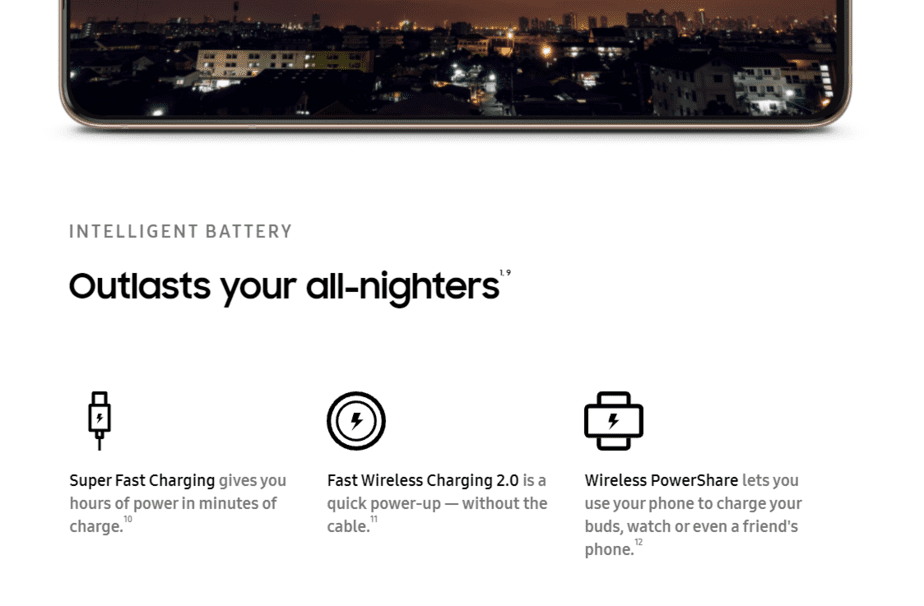
High-powered smartphones have a harder time with battery performance since their components usually consume a lot more power than what you’d find on lower-end handsets. However, both the Samsung Galaxy S21 and the Xiaomi Mi 11 offer superb battery performance so you can count on your flagship Android phone to last you the whole day. However, the Xiaomi Mi 11 does pull ahead in terms of battery performance thanks to the larger 4,600 mAh battery over the Samsung’s 4,000 mAh, as well as faster charging on all fronts - 55W fast charging, 50W fast wireless charging, and 10W reverse wireless charging.
The Final Verdict
Overall, the Samsung Galaxy S21 and the Xiaomi Mi 11 are both excellent Android smartphones in their own right. With both options featuring fantastic displays, high-end camera hardware, similar high-performance components, and 5G connectivity for future-proofing, either smartphone would make a great choice for any Android enthusiast - at least when we’re talking about the models with the Qualcomm Snapdragon 888 5G.
If you’re getting the Samsung Galaxy S21 with the Exynos 2100 chipset, you may be paying a little more money for a little less performance. However, with its lower price, the budget-friendlier Xiaomi Mi 11 is a fantastic flagship smartphone that’s available at the higher end of the mid-range price spectrum, without making any compromises on features or performance.
That said, the Samsung Galaxy S21 is still a more polished user experience with Samsung One UI, though if you’re not a fan of Samsung’s Android skin, MIUI 12.5 on the Xiaomi Mi 11 could be a refreshing new way to interact with your smartphone.
Xiaomi Mi 10 vs Samsung Galaxy S20 Ultra

Released a few days apart, the Mi 10 and S20 Ultra run on the powerful Snapdragon 865. Both devices run on an Octa-Core processor and an Adreno 650 GPU for the graphics.
- The Samsung S20 Ultra uses a 6.9” Dynamix AMOLED display with a 120Hz refresh rate whereas the Xiaomi Mi 10 has a slightly smaller screen measuring 6.67”. This Super AMOLED display has a max refresh rate of 90Hz.
- Each device has its UI; the Samsung uses the One UI based on Android 10 while Mi 10 uses the MIUI UI 12 that’s built around Android 10.
- While looking at the camera setup, the S20 Ultra is equipped with a 108MP Quad-camera array and supports 8K video recording. With a 40MP front-facing camera. The Samsung S20 Ultra is a beast when compared to the Mi 10 which has a 108MP Quad-camera setup and 8K recording along with a 20MP front-facing camera.
- The main difference is that the camera array is differently set up in both phones. Though they both use the same 108MP Quad setup, the Xiaomi has a 108MP primary lens, 13MP ultra-wide lens, 2MP macro lens, and another 2MP depth sensor. On the other hand, the reason why the S20 Ultra is better is that it uses a 108MP primary lens, a 48MP telephoto lens, 12MP ultra-wide super steady lens with a 0.3MP depth sensor. The S20 Ultra is preferred for long-range shots while the Xiaomi Mi 10 would be used in close-ups and short-range photos.
- In terms of battery capacity and charging capabilities, both devices come with Reverse wireless charging, wireless charging, and direct fast charging. The S20 Ultra has a larger battery and quick charging capabilities.
Specifications
| Xiaomi Mi 10 | Samsung S20 Ultra | |
| Processor | Qualcomm Snapdragon 865; Octa-Core with Adreno 650 | Qualcomm Snapdragon 865; Octa-Core with Adreno 650 |
| Display | 6.67” Super AMOLED; 90Hz; 1080*2340px | 6.9” Dynamic AMOLED; 120Hz; Always-on display; 1440*3200px |
| Operating System | MIUI 12 (Android 10) | One UI 2.5 (Android 10) |
| Camera Setup | 108MP wide + 13MP ultra-wide + 2MP macro + 2MP depth / 20MP Selfie camera | 108MP wide + 48MP periscope telephoto + 12MP ultra-wide + 0.3MP depth / 40MP Selfie camera |
| Protection | Corning Gorilla Glass 5 | Corning Gorilla Glass 6 |
| RAM | 8GB/12GB | 12GB/16GB |
| ROM (Storage) | 128GB/256GB | 128GB/256GB//512GB |
| Battery Capacity |
4780mAh Li-Polymer, Fast Charging 30W Fast Wireless Charging 30W |
5000mAh Li-Polymer, Fast Charging 45W Fast QiPMA Wireless Charging 15W |
| Price | $899 | $954.80 |
Verdict: I’m considering the Mi 10 as the winner between these two simply because there’s a lot in store with Xiaomi’s flagship killer.
Xiaomi Mi 9 vs Samsung Galaxy S10

The Xiaomi Mi 9 and the Galaxy S10 were released on the same day back in 2019, both are still extremely powerful smartphones that are still available today thanks to their dominance in the mid-range market.
- Both the devices are powered by the Snapdragon 855 Octa-Core processor running on Android 9 OS that can be upgraded to Android 10. These models come with the Adreno 640 GPU but the EMEA and LATAM versions of the Galaxy S10 will be equipped with the Mali-G76 MP12 GPU.
- Samsung’s S10 has a slightly smaller 6.1” Dynamic AMOLED display as compared to the Mi 9 which uses a 6.39” Super AMOLED display. Both come with HDR 10+ and have Gorilla Glass 6 protection.
- The overall camera setup on the Mi9 is better than that of the S10. Xiaomi uses a 48MP wide lens while the S10 has a 12MP primary camera. Both smartphones come with an LED Flash and 4K video recording capabilities. The front camera on the Mi 9 is a 20MP wide lens whereas the Galaxy S10 uses a 10MP Dual Pixel wide front camera.
- The batteries are roughly the same wattage however, the Mi9 has better fast charging capabilities. Xiaomi has a 3300mAh Li-Po battery that fast charges at 27W while the S10 has a 3400mAh Li-ion battery which is capable of fast charging at 15W.
Specifications
| Xiaomi Mi9 | Samsung S10 | |
| Processor | Qualcomm Snapdragon 855; Octa-Core with Adreno 640 | Qualcomm Snapdragon 855; Octa-Core with Adreno 640/Mali-G76 MP12 |
| Display | 6.39” Super AMOLED; HDR10+; 1080*2340px | 6.1” Dynamic AMOLED; HDR10+; Always-on display; 1440*3040px |
| Operating System | MIUI 11 (Android 9) | One UI 2.1 (Android 9) |
| Camera Setup | 48MP wide + 12MP telephoto + 16MP ultra-wide / 20MP Selfie camera | 128MP wide + 12MP telephoto + 16MP ultra-wide / 10MP Selfie camera |
| Protection | Corning Gorilla Glass 6 | Corning Gorilla Glass 6 |
| RAM | 6GB/8GB | 8GB |
| ROM (Storage) | 64GB/128GB/256GB | 128GB/512GB |
| Battery Capacity |
3300mAh Li-Polymer, Fast Charging 27W Fast Wireless Charging 20W |
3400mAh Li-i15, Fast Charging 15W Fast Qi/PMA Wireless Charging 15W |
| Price | $379 | $481.06 |
Verdict: A cheaper choice, the Mi9 has a better camera setup, a larger display, and quite a premium finish to the body of the smartphone.
Xiaomi Redmi Note 7 Pro vs Samsung Galaxy M30

Again, two smartphones that were launched a day apart kicked up quite a storm as they were kind of identical in build and almost the same in terms of hardware used.
- The Note 7 Pro is powered by an Octa-Core Snapdragon 675 with an Adreno 612 GPU while Samsung uses an Octa-Core Exynos 7908 processor with a Mali-G71 MP2 GPU unit. Both devices can be upgraded to Android 10.
- Samsung's M30 is equipped with a 6.4” Super AMOLED that has a resolution of 1080*2340px whereas the Note 7 Pro has a 6.3” IPS LCD and a resolution of 1080*2340px making the display on the Galaxy M30 far superior to that of the Note 7 Pro.
- While looking at the camera setup, Xiaomi uses a 48MP Dual camera set up while Samsung has a 13MP Triple camera setup. The front-facing camera on the Note 7 Pro is a 13MP HDR camera whereas the Galaxy M30 uses a 16MP HDR selfie camera.
- Even the batteries on both the devices are not the same, Samsung has a 5000mAh Li-Polymer battery with 15W fast charging capabilities and the Note 7 Pro has a 4000mAh battery that fast charges at 18W.
Specifications
| Xiaomi Redmi Note 7 Pro | Samsung Galaxy M30 | |
| Processor | Qualcomm Snapdragon 675; Octa-Core with Adreno 612 | Exynos 7904; Octa-Core with Adreno 640/Mali-G71 MP2 |
| Display | 6.3” IPS LCD; 1080*2340px | 6.4” Super AMOLED; 1080*2340px |
| Operating System | MIUI 11 (Android 9) | One UI 2 (Android 8) |
| Camera Setup | 48MP wide + 5MP depth / 13MP Selfie camera | 13MP + 5MP ultra-wide + 5MP depth / 16MP Selfie camera |
| Protection | Corning Gorilla Glass 5 | N/A |
| RAM | 4GB/6GB | 3GB/4GB/6GB |
| ROM (Storage) | 64GB/128GB | 32GB/64GB128GB |
| Battery Capacity |
4000mAh Li-Polymer, Fast Charging 18W |
5000mAh Li-Polymer, Fast Charging 15W |
| Price | $191.10 | $181.72 |
Verdict: Around the same price range, the Galaxy M30 has a larger display and battery but lacks the Snapdragon 675. If you’re going for the display and battery then the Galaxy M30 is the right one for you, however, if you’re looking for one with a better camera setup that has Gorilla glass 5 along with a decent GPU then the Note 7 Pro is the one for you.
What does Xiaomi do better than Samsung?
Xiaomi phones are known for their battery life, they offer higher battery capacities and last longer on average when compared to Samsung phones. Along with larger batteries, Xiaomi phones have faster-charging technologies (both wired and wireless).
Xiaomi also offers better processors and more RAM compared to Samsung in the same price range. Thus Xiaomi offers better value for money from a performance perspective.
Xiaomi phones feature better speakers with most of their models housing stereo speakers. Xiaomi phones come included with IR blasters that let you control devices like TVs, Vacuum cleaners, and other products with IR receivers.
In all these metrics, Xiaomi smartphones are much better than Samsung and if these features are important for you, I would suggest picking up a Xiaomi phone over Samsung.
What does Samsung do better than Xiaomi?
Here are some advantages Samsung smartphones have over Xiaomi models. Samsung smartphones are known for their awesome displays with Samsung being a pioneer in AMOLED displays. Even Xiaomi sources display for some of their smartphones from Samsung.
Samsung also has an upper hand when it comes to software, they offer cleaner software (fewer bloatware and ads) with better features too. I would pick Samsung’s OneUI over Xiaomi’s MIUI every time.
Samsung smartphones have better cameras especially when it comes to video recording. They take better pictures at nighttime and have more stable video recording capabilities.
Overall, Samsung smartphones are a better package especially for higher-end models, while Xiaomi does it better in midrange and budget models. So if you are looking for a flagship phone, get a Samsung over Xiaomi but if you are budget constrained, go with Xiaomi.
Redmi vs Samsung
Xiaomi has multiple mini brands for its smartphone lineup. Redmi is one of Xiaomi’s mini brands that focus on budget smartphones.
Redmi phones offer good value for money thanks to powerful processors and large batteries. Redmi phones also have better camera specs compared to similarly priced Samsung phones. Redmi phones feature better design and build quality in this price segment.
Samsung in this price category has some M series, F series, and A-series phones. They all perform worse in comparison to Redmi phones but offer better software support and good displays for the price.
Some M series and F series phones like the M51, M52, and F62 offer better battery life compared to Redmi phones. Samsung phones have cleaner software with longer update support compared to Redmi.
If performance and battery life are important, go for Redmi, but if you want a clean software experience, then Samsung is the obvious choice.
The budget category has always been about compromises. Regardless of whether you choose Redmi or Samsung, there will be shortcomings, so it's all about what compromises you are willing to live with.
Xiaomi vs Samsung: Flagships
| Product | Samsung Galaxy S22 | Samsung Galaxy S22+ | Samsung Galaxy S22 Ultra | Xiaomi 12 | Xiaomi 12X | Xiaomi 12 Pro |
| Display | 6.1 inch AMOLED 2400x1080 pixels |
6.6 inch AMOLED 2400x1080 pixels |
6.8 inch AMOLED 3088x1440 pixels |
6.28 inch AMOLED 2400x1080 pixels |
6.28 inch AMOLED 2400x1080 pixels |
6.73 inch AMOLED 3200x1440 pixels |
| Processor | Snapdragon 8 Gen 1 (USA) | Snapdragon 8 Gen 1 (USA) | Snapdragon 8 Gen 1 (USA) | Snapdragon 8 Gen 1 | Snapdragon 870 5G | Snapdragon 8 Gen 1 |
| 128/256 GB ROM 8 GB RAM |
128/256 GB ROM 8 GB RAM |
128 GB/256 GB/512 GB/1 TB ROM 8/12 GB RAM |
128/256 GB ROM 8/12 GB RAM |
128/256 GB ROM 8/12 GB RAM |
128/256 GB ROM 8/12 GB RAM |
|
| Camera | Main Wide 50 MP Ultra-wide 12 MP Telephoto 10 MP |
Main Wide 50 MP Ultra-wide 12 MP Telephoto 10 MP |
Main Wide 108 MP Ultra-wide 12 MP Telephoto 1 10 MP Telephoto 2 10 MP |
Main Wide 50 MP Ultra-wide 13 MP Macro 5 MP |
Main Wide 50 MP Ultra-wide 13 MP Macro 5 MP |
Main Wide 50 MP Ultra-wide 50 MP Telephoto 50 MP |
| Battery | 3,700 mAh | 4,500 mAh | 5,000 mAh | 4,500 mAh | 4,500 mAh | 4,600 mAh |
Xiaomi vs Samsung: Mid-Range
| Product | Samsung Galaxy A73 | Samsung Galaxy A53 | Samsung Galaxy A33 | Samsung Galaxy A52s | Xiaomi Redmi Note 11 Pro (5G) | Xiaomi Redmi Note 11 Pro | Xiaomi Redmi Note 11S | Xiaomi Redmi Note 11 |
| Display | 6.7 inch Super AMOLED 2400x1080 Pixel |
6.5 inch Super AMOLED 2400x1080 pixels |
6.4 inch Super AMOLED 2400x1080 Pixel |
6.5 inch Super AMOLED 2400x1080 pixels |
6.67 inch AMOLED 2400x1080 pixels |
6.67 inch AMOLED 2400x1080 pixels |
6.43 inch AMOLED 2400x1080 pixels |
6.43 inch AMOLED 2400x1080 pixels |
| Processor | Snapdragon 778 5G | Exynos 1280 | Exynos 1280 | Snapdragon 778 5G | Qualcomm Snapdragon 695 | MediaTek Helio G96 | MediaTek Helio G96 | Qualcomm Snapdragon 680 |
| RAM and Storage | 128 / 256 GB ROM 8 GB RAM |
128 / 256 GB ROM 6 / 8 GB RAM |
128 GB ROM 6 / 8 GB RAM |
128 / 256 GB ROM 6 / 8 GB RAM |
64 / 128 GB ROM 6 / 8 GB RAM |
64 / 128 GB ROM 6 / 8 GB RAM |
64 / 128 GB ROM 4 / 6 GB RAM |
64 / 128 GB ROM 4 / 6 GB RAM |
| Cameras | Main Wide 108 MP Ultra-Wide 12 MP Macro 5 MP Depth 5 MP |
64 MP Main Wide 12 MP Ultra-wide 5 MP Macro 5 MP Depth |
Main Wide 48 MP Ultra-Wide 8 MP Macro 5 MP Depth 2 MP |
Main Wide 64 MP Ultra-wide 12 MP Macro 5 MP Depth 5 MP |
Main wide 108 MP Ultra-wide 8 MP Macro 2 MP |
Main Wide 108 MP Ultra-wide 8 MP Macro 2 MP |
Main Wide 108 MP Ultra-wide 8 MP Macro 2 MP Depth 2 MP |
Main Wide 50 MP Ultra-wide 8 MP Macro 2 MP Depth 2 MP |
| Battery | 5000 mAh | 5000 mAh | 5000 mAh | 5000 mAh | 5000 mAh | 5000 mAh | 5000 mAh | 5000 mAh |
Samsung vs Xiaomi: Low-End
| Product | Samsung Galaxy A13 4G | Samsung Galaxy A03s | Samsung Galaxy M12 | Xiaomi Redmi Note 10S | Xiaomi Redmi Note 9T | Xiaomi Redmi 9C |
| Specifications | 6.6 inch LCD 2408x1080 pixels |
6.5 inch LCD 1600x720 pixels |
6.5 inch LCD 1600x720 pixels |
6.43 inch AMOLED 2400x1080 pixels |
6.53 inch LCD 2340x1080 pixels |
6.53 inch LCD 1600x720 pixels |
| Processor | Unnamed octa-core SoC | MediaTek MT6765 Helio P35 | Samsung Exynos 850 | MediaTek Helio G95 | MediaTek MT6853 Dimensity 800U | MediaTek MT6765G Helio G35 |
| RAM and Storage | 64 GB ROM4 GB RAM | 32/64 GB ROM 2/3/4 GB RAM |
32/64/128 GB ROM 3/4 GB RAM |
64/128 GB ROM 4/6/8 GB RAM |
64/128 GB ROM 4/6 GB RAM |
32/64/128 GB ROM 2/3/4 GB RAM |
| Cameras | Main Wide 50 MP Ultra-wide 5 MP Macro 2 MP Depth 2 MP |
Main Wide 13 MP Macro 2 MP Depth 2 MP |
Main Wide 48 MP Ultra-wide 5 MP Macro 2 MP Depth 2 MP |
Main Wide 64 MP Ultra-wide 8 MP Macro 2 MP Depth 2 MP |
Main Wide 48 MP Macro 2 MP Depth 2 MP |
Main Wide 13 MP Macro 2 MP Depth 2 MP |
| Battery | 5000 mAh | 5000 mAh | 5000 mAh | 5000 mAh | 5000 mAh | 5000 mAh |
Xiaomi vs Samsung: Foldables
| Product | Xiaomi Mix Fold 2 | Samsung Galaxy Z Fold 4 | Samsung Galaxy Z Flip 4 |
| MSRP | From $1,599 | from $1,799 | from $999 |
| Image | |||
| Specifications | 8.02 inches, LTPO2 OLED 1914 x 2160 pixels 6.5 inch, AMOLED 1080 x 2520 pixels Qualcomm Snapdragon 8+ Gen 1 256GB / 512GB / 1TB ROM 12 GB RAM Triple camera Main camera: 50 MP Ultra wide-angle: 13 MP Telephoto camera: 8 MP 4,500 mAh |
7.6 inch, Dynamic AMOLED 1812 x 2176 pixels 6.2 inch, Super AMOLED 904 x 2316 pixels Qualcomm Snapdragon 8+ Gen 1 256GB / 512GB / 1TB ROM 12 GB RAM Triple camera Main camera: 50 MP Ultra wide-angle: 12 MP Telephoto camera: 10 MP 4,400 mAh |
6.7 inch, Dynamic AMOLED 1080 x 2640 pixels 1.9 inch, AMOLED 260 x 512 pixels Qualcomm Snapdragon 8+ Gen 1 128 / 256 / 512 GB ROM 8 GB RAM Dual camera Main camera: 12 MP Ultra wide-angle: 12 MP 3,700 mAh |
Overall Verdict
From this breakdown of Xiaomi vs Samsung, should you choose Xiaomi or Samsung? We get to see that both brands are similar in so many ways, this has allowed them to cover all segments in the market. It is evident that Samsung manufactures and sells its phones at a premium as compared to Xiaomi but Samsung still has to work on its marketing strategies to be able to reduce the prices of its smartphones.
Xiaomi is ideal for users of all age groups and primarily targets the mid-range sector. So the answer to Samsung or Xiaomi depends on your preferences and needs.
Samsung on the other hand is a premium name making it a status symbol apart from a handy device, this results in slightly higher prices though both smartphone brands use pretty much the same hardware in their smartphones.
FAQs
Why is Xiaomi cheaper than Samsung?
Which brand is better Samsung or Redmi?
Is Xiaomi better than Samsung?
Is Xiaomi as good as Samsung?
Are Xiaomi phones good quality?
Is Samsung better than Mi?
Which brand is better than Xiaomi?
Also Read:
